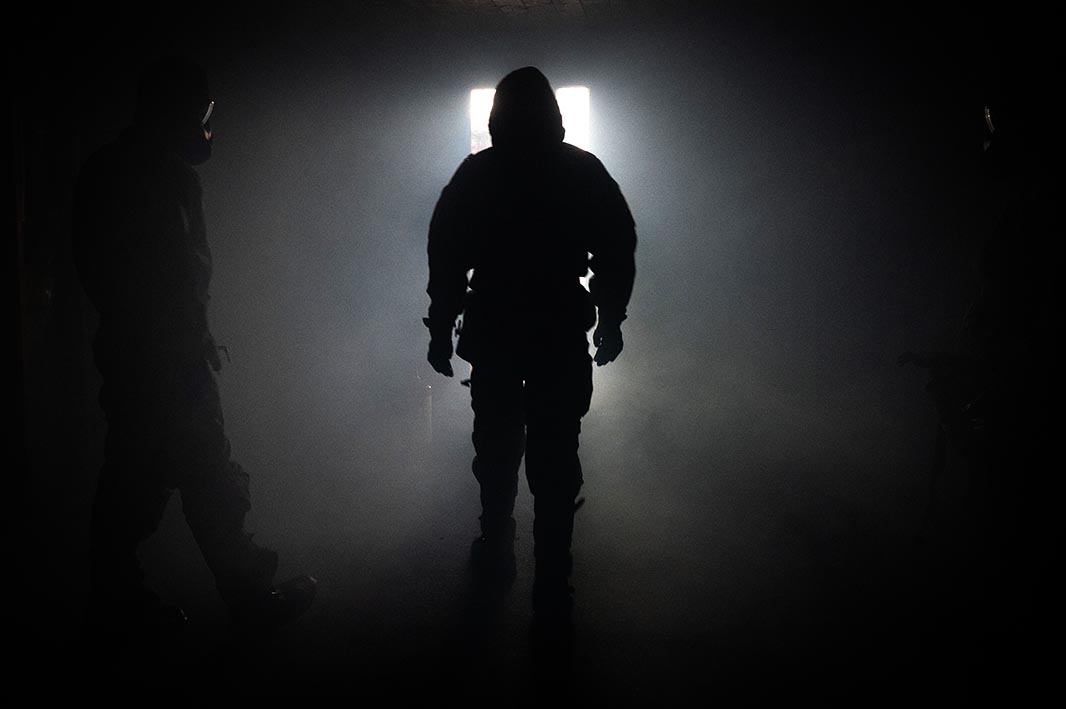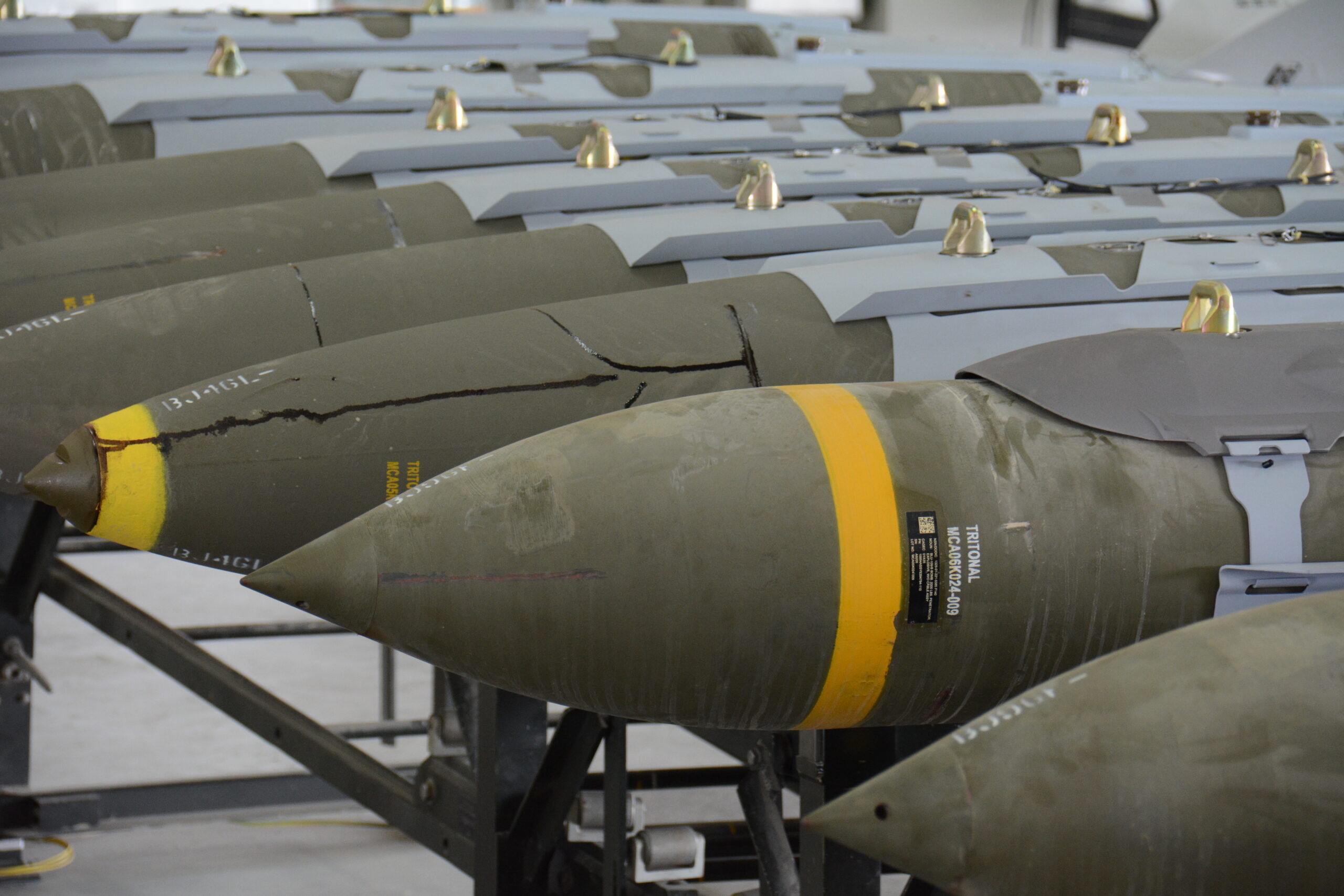Nanotechnology is a double-edged sword in the CBRN sphere, offering possibilities for both new vulnerabilities and promising countermeasures. The real-world practical implications range from threat delivery systems capable of circumventing protective gear, to more capable detection and protection technologies.
Nanotechnology is the manufascture and manipulation of materials at the scale of one to one hundred nanometres. A nanometre is one billionth of a metre. Modern science and technology have made great progressive leaps in this area. Some of these advances have either direct or indirect implications in chemical and biological defence. While there may at some point be also some implications in radiological and nuclear defence, this article will explore the numerous implications in the chemical and biological defence realm. Some of this will, by necessity, delve into some of the finer technical points of CBRN science, but your correspondent will endeavour to explain it in clear language. As there are literally thousands of diverse lines of inquiry in this space, the term ‘nanotechnology’ is necessarily a broad one and a relatively wide interpretation is used herein.
Threats: Making bad things worse
Nanotechnology does not just make smaller objects, it can also provide ways to contain, move, or manipulate materials in ways that could increase their utility as threats. In this correspondent’s mind, encapsulation is one of the more serious areas of concern. Nano-encapsulation and micro-encapsulation are serious threats in the chemical and biological arena. In full disclosure, encapsulation at micro-scale rather than nano-scale would achieve some of these goals, but this article looks at the problem broadly, and the tools to perform encapsulation are being driven by nanotechnology.
Much effort is being made at the micro- and nano-scale to encapsulate materials. The nanomaterial itself is used to provide a coating around or carrier for some other things. Most chemical warfare agents and biological warfare agents are, despite a century of talk of ‘war gases’, liquids at room temperature. Some of them are volatile, and give off vapours. Others are non-volatile. What happens if you take one of these dangerous chemicals or biological pathogens and put them in a protective encapsulation? In effect, you are taking a liquid and, for tactical purposes, you are making it into a fine powder. A finely divided powder makes for good aerosols, and this has numerous implications in CBRN defence. It is alleged, but by no means substantiated, that the ‘Novichok’ materials used to poison Alexei Navalny in 2020 were encapsulated in some sort of nanomaterial.
Perhaps the starkest prospect is that nanotechnology provides a way in which some chemical compounds that normally are not useful as chemical warfare agents might be rendered into a form that makes them useful for warfare or terrorism. Substances that might be too volatile (for instance, evaporating too easily), lighter than air (wafting away in open air too easily), solid at room temperature (by using nano-particle dust, you are effectively taking a solid and making it act like a gas or vapour by putting it in aerosol), or too vulnerable to the environment (reacting with moisture, sunlight, etc.) could all be theoretically drafted into service as weapons. Nano-encapsulation could theoretically broaden the spectrum of compounds available for aggressive purposes by an adversary.
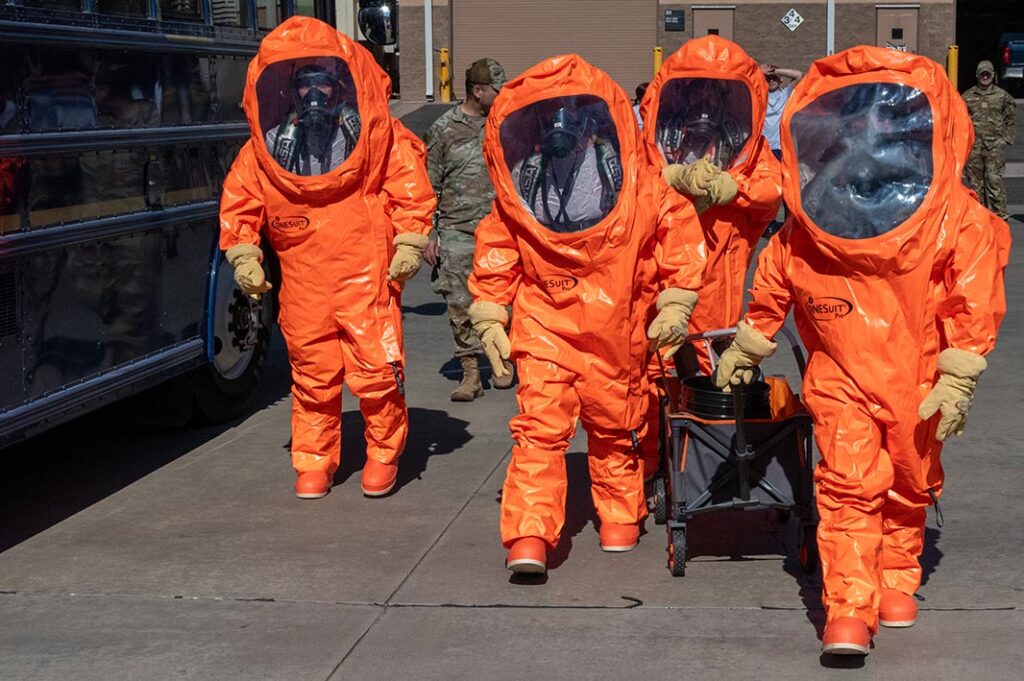
Another troubling aspect arises when we look at the implications on protection. CBRN protection typically involves a filter-based respirator and some type of clothing. Typical military protective clothing consists of impermeable (rubber or equivalent) boots and gloves but suits made of selectively permeable textiles. The concept is to keep large and small droplets of chemicals from hitting the skin and to provide a layer of protection from gases, aerosols, and vapours, all of which need a pretty high concentration to directly harm through skin contact alone. Impermeable clothing works very well, of course, but the heat burden associated with it is very high and often unsuitable for combat soldiers for any extended period of time. The broad arc of protective clothing has been that of developing better and lighter ways of allowing some moisture and heat to escape, while keeping droplets off the skin. However, the arc of progress in chemical protective clothing might be circumvented by nanoparticles.
When confronted by an aerosol of very small particles at the nano-scale, this raises the prospect of such particles working their way through the clothing. In principle, filter-based respirators, as long as they are fitted properly and working properly, are a fine form of protection against this sort of threat to the respiratory tract. However, there is every prospect that nano-scale particles may be able to work their way through protective clothing that has been engineered around liquid droplets. This is a valid concern and the vulnerability will probably vary significantly depending on the exact clothing in question. But in theory, encapsulation could transform a molecule that really isn’t much of a threat by means of skin contact into one that is, by evading the protective value of specialist clothing.
Another logical question that one could ask is ‘how would these nanoparticles affect detection?’ After all, masks and suits are no good if nobody knows when to wear them. Real-time biological agent detection is a bit like nuclear fusion, in that it shows promise but is permanently years away. Yet real-time detection of chemical warfare agents is very much a current capability and myriad useful products are available. However, the various technologies in use in chemical warfare agent detection are largely based on the assumption that they are trying to detect liquids, gases, vapours, and aerosols of liquids. Encapsulation changes the physical state of the chemical warfare agent, effectively turning it from a liquid (or even gas in some cases, theoretically) into a solid. Furthermore, that encapsulation process puts a thin barrier around the chemical warfare agent. Many chemical warfare agent detectors would be frustrated by an aerosol of nano-particles. Would some of the particles degrade in a field environment, leaving enough chemical agent to be detected? Possibly, but the answer to that is difficult to calculate and will vary greatly on the nanomaterial used and the exact detection instrument used. Is there an operational requirement for a generic nanoparticle aerosol detector, based on the assumption that anyone spreading an aerosol of nanoparticles is up to no good? This is a space to watch.
So what if one breathes nanoparticles in? A reasonably well-educated CBRN specialist would ask an obvious question at this point. Does this really represent an aerosol threat by inhalation? After all, particles lower than one micron in size (i.e. still above the top end of the nano-scale), are generally too small to be effectively absorbed into the body through the lungs. They tend to be too light to get stuck in the alveoli, the tiny pockets in the lungs. Conversely, particles larger than ten microns in size are too big. They might cause problems elsewhere, but getting directly into the blood stream would be problematic for such particles, due to their size.

Surely, this aerosol biology one-to-ten-micron rule of thumb rules out nanoparticles as CBRN threats? Sadly, no. What presents itself here is, effectively, two issues. First of all, there’s no reason why someone making nano-encapsulated materials as a deliberate military or terrorism threat would go to all that effort without understanding the basic issues of aerosol biology. One could find a lot of ways to make nano-particles portions of larger particles. Clumps of toxic nano-particles bound together to be, say, 2 microns in diameter, would be a very bad thing for someone to breathe in, since they would be the right size to get into the lungs.
What then? Now here is a crucial issue. Much work is being done in the pharmaceutical world to use nano-technology to help drug delivery. But the difference between a drug and a poison does not matter to a nanoparticle. The difference between a drug and a poison is dose and context. By engineering better ways to deliver medicinal compounds to particular tissues in the human body, nanotechnology seeks to improve the quality of medical care. However, the same pathway can be taken by poisons and pathogens. A key example is the use of nano-scale particles to cross the blood-brain barrier. For those readers who need a refresher, the blood-brain barrier is a set of cells in the body that do a very good job of keeping substances in the blood stream from passing into brain cells. This barrier is one of the more efficient systems in human physiology. While preventing much damage to our brains, it also has befuddled pharmacology, which has developed drugs that might need to transit this barrier. One such strategy involves nanoparticles which could be small enough to slip through the semi-permeable border between blood stream and brain tissue. However, if you do this with some poisonous materials, it makes them more toxic to the human body by giving them an express route to brain tissue. So, not only does nanotechnology increase the list of possible threats, it can make the threats more deadly than they already are.
Prospects: The good news
Nanotechnology gives with one hand and takes away with another. Some aspects of this emerging field contain some prospect of improved defence against CBRN threats. Various technical advances that represent possible threats can be flipped on their head and used to improve various aspects of defence, such as detection, decontamination, and medical countermeasures.
Miniaturisation is one area where there may be some prospect for improved CBRN defence. Nanotechnology is developing tools to make very small devices. The tools used for other aspects of nano-scale manufacturing could be used to manufacture detection equipment that is much smaller than currently available. A NATO conference on this exact subject in 2019 yielded dozens of interesting papers ranging from across numerous areas of technology that quickly get beyond your correspondent’s technical scope to comprehend. An entire book (Denizli, A, ed. Plasmonic Nanosensors for Biological and Chemical Threats, CRC Press, 2024) discusses a dozen possible frontiers in this area.
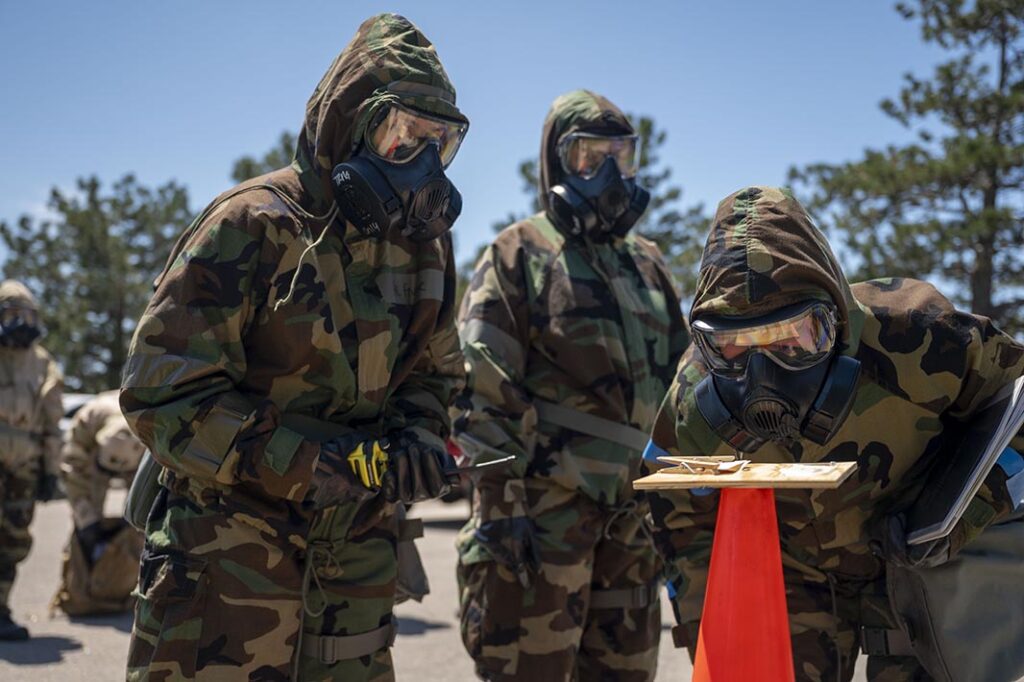
One nanotechnology subdiscipline that appears to be doing a lot of the lifting in the field is nanofluidics – the field of manipulating small amounts of fluid, at nano-scales. Where this comes into play in CBRN defence sciences is particularly in chemical and biological warfare agent detection. A number of different approaches for detecting and identifying chemical or biological substances may involve handling of fluids, and this is particularly true in the current biological detection segment. Handling very small samples of air or fluid can possibly reduce the size needed for various methods of chemical and biological interrogation. Imagine a test strip like a COVID-19 test, but with literally dozens of agents that it could detect. Could a number of complex processes for interrogating an air sample or a liquid specimen be reduced to a single small chip? Not quite yet. But that day is not far away.
Nanoparticles may also be a pathway for improvements to both filter-based protection and decontamination. Manipulation of materials on this scale, particularly in the realm of Carbon-based molecules, can increase the prospect for materials that are used in filtration and decontamination. This assertion requires a little bit of explanation. The filter on a modern military CBRN mask actually uses a lot of different methods to screen the air being inhaled by the user. Two of these are absorption and adsorption. Casual readers may need to look at that closely to see that I did not use the same word twice. ‘Absorption’ means taking something inside. ‘Adsorption’ means, broadly, sticking to the outside. Carbon molecules in mask filters do both. To use a crude analogy, absorption is like have an underground parking garage inside a building. The building can take in a number of outside vehicles. Adsorption is like having a row of parking spaces next to the building. The building can take a number of cars right next to it.
By crafting nanoparticles in the right way, in theory a material can be made that increases the ability to absorb and adsorb. In other words, nanomanipulation can likely take materials that already have, to use the metaphor from above, a lot of parking spots, both outside and inside the particle. This could, in theory, give a mask filter (or a collective protection filter on a tank or onboard a naval vessel) more protective capabilities. A cynical observer would be right to point out that absorption and adsorption only apply to gases, vapours, and liquid droplets, not solids like, say, nefarious nanoparticles. Fear not, another aspect of filters is electrostatic attraction. The air flow generates a static electricity charge that makes particles stick to the filter media. This already happens in filters and could even possibly be improved in newer nanotechnology filters. Whether any of this is achievable at a reasonable price for a useful improvement over the already good characteristics of an existing activated Carbon filter is another question entirely, as none of this nanotechnology comes cheaply at the moment.
There has also been some work on incorporating nanoparticles and nanofibres into textiles for use in protective clothing. While this does not appear to alleviate the threat of nanoparticles themselves, it gives the prospect of making permeable chemical protective clothing even lighter than the present generation of equipment. A number of articles in technical publications address this possibility, suggesting that some manufacturers may already be venturing in this direction.
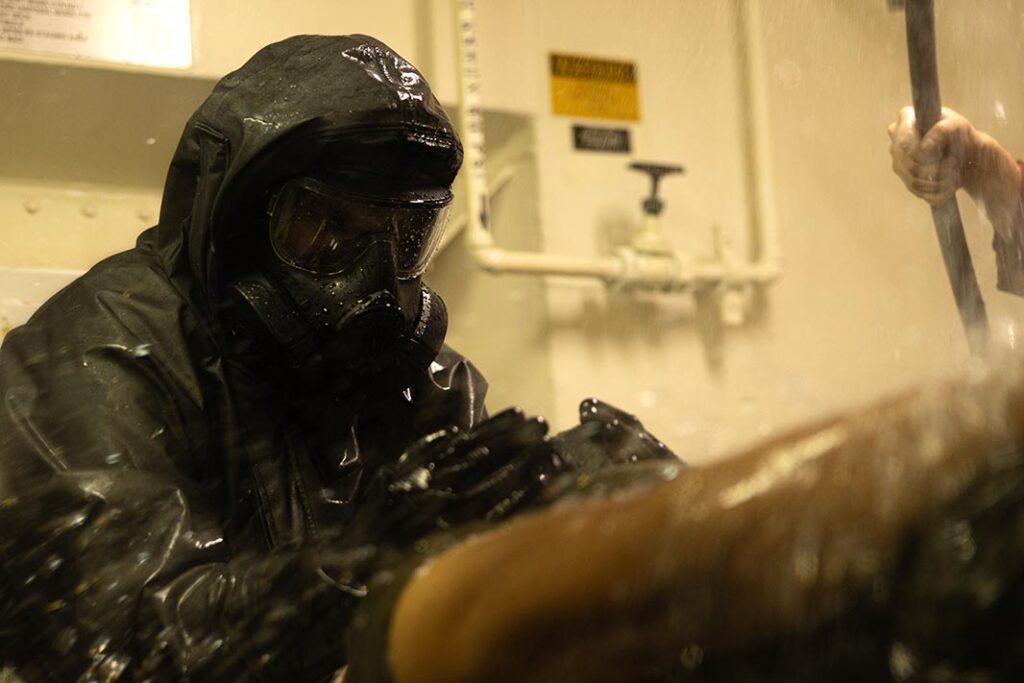
The same improvements in absorption and adsorption can also, in theory, lead to improved materials for decontamination. The same ‘more parking spaces’ analogy applies to decontamination. There has been a long history of using various types of powders for decontamination purposes, whether it be the mineral Fuller’s Earth or the special resins in the US M291 and M295 decontamination kits. Such powders work by absorbing and/or absorbing liquids off of surfaces, even skin. The sorbent (absorption or adsorption) properties of various nanomaterials have been investigated for numerous applications. Studies has pointed to the possibility of zinc oxide or cerium oxide nanoparticles being useful for skin decontamination. Whether or not chemical warfare agents thus absorbed or adsorbed by specialist powders become, in effect, the new threat vectors defined above, is a complicated question.
Yet another area where CBRN countermeasures may improve based on nanotechnology is in medical treatment of CBRN injuries. As of mid-2025, a simple Google Scholar search on the terms “nanotechnology ‘drug delivery’” yielded over 1 million results, with over 25,000 papers and articles since 2024. Some of the proposed developments would have direct, indirect, or tangential aspects relevant to administering necessary medications. For example, a study in India postulates the use of atropine nanoparticles in a respiratory inhaler as a possible modality for treating nerve agent victims. Another study explored transdermal administration of scopolamine – a drug similar in its anti-nerve agent effects to atropine. Perhaps inhalers and patches may join autoinjectors as a less invasive method of treatment. Other drugs that exploit the ability of some nanoparticles to slip through the blood-brain barrier may allow for delivery novel compounds that prevent or mitigate brain damage from nerve agents.
Drug delivery is, of course, only one aspect of medical treatment of CBRN-related illnesses and injuries. Diagnostic technology may improve along on some of the same lines that CBRN detection technology. Regardless of CBRN detection and protection, there will always be a need to conduct post-exposure diagnosis. With biological warfare agents, field detection will probably remove elusive and, at best, sporadic. Yet early detection of infections by pathogens can be lifesaving, particularly with biological warfare agents such as anthrax. Improved diagnostic techniques using one or more nanotechnology components have been heavily discussed in the scientific literature.
Overall prospects
It is clear that nanotechnology is both a threat and a boon in the CBRN defence space. This correspondent has come to the view that it is more of a boon than a threat. The scientific and industrial space for the defensive aspects appears to have a lot of weight behind it, and aside from unproven allegations of one aspect of Russian state terror, there has been scant evidence of nefarious activity. But any blossoming of CBRN defence based on nanotechnology is only going to go ahead if the economics work out.
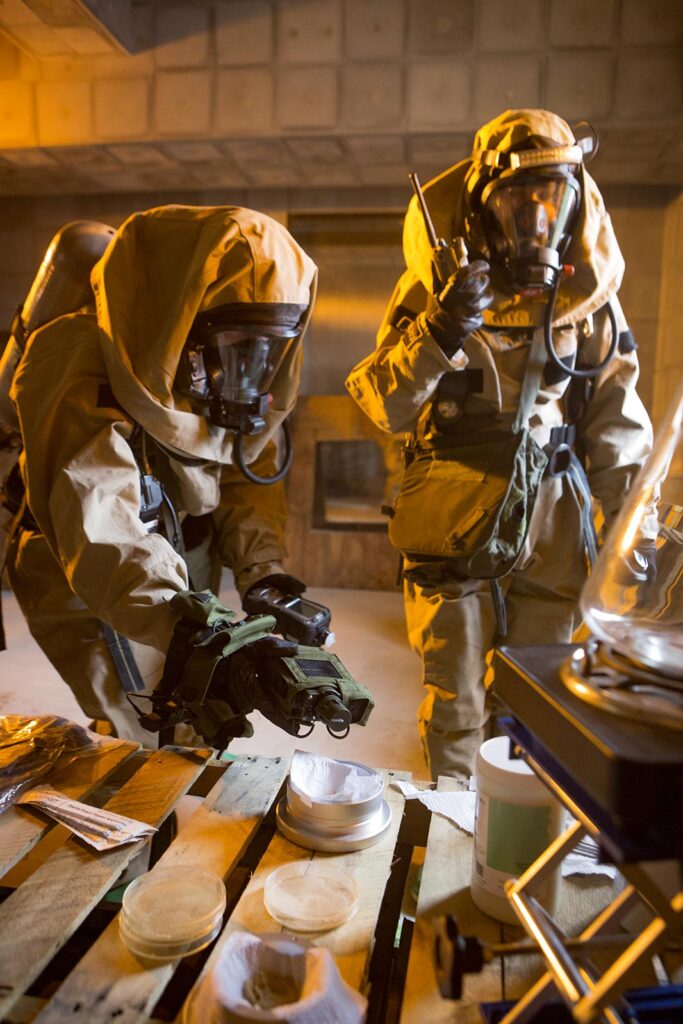
Specialist devices and prototype systems relevant to CBRN defence already exist. Others are not far behind in technology readiness level (TRL). As has always been the case, much improvement in CBRN defence technology is theoretically possible but economically impractical. None of this stuff is cheap. Some aspects of nanotechnology are ruinously expensive. A chemical detection device that is smaller and faster than the current state of the art devices may be possible with nanotechnology, but if it costs 5 or 10 times the current offering, is the marginal improvement worth the extra expenditure? Some nanomaterials cost more by weight than gold. Would a nanoparticle decontamination powder that is very expensive be worth the cost differential over soap and water, which are ubiquitous and cheap? No army would buy a chemical protective suit for widespread issue to soldiers if it cost USD 10,000 a set.
One thing the world has learned from other fields of technology is that the prohibitive expense of new technologies does come down quickly as products go from lab to factory to product. We should not be daunted by the theoretical cost of some of the prototype items. Nanotech will get substantially cheaper. Whether or not the major players (for that, read the US and other NATO members) decide to invest in the CBRN defence aspects of nanotechnology over time, particularly given other demands on defence budgets. But with defence budgets on the rise across NATO, a rising tide will raise many boats, so to speak, and nanotechnology is an obvious front for spending more money to buy better capability. Defence technologies can have civil applications. It works the other way around, possibly even better. The existing investments in, say, nanomaterials in medical applications could easily be leveraged for CBRN defence. It will be an interesting space to watch over the coming decade.
Dan Kaszeta
